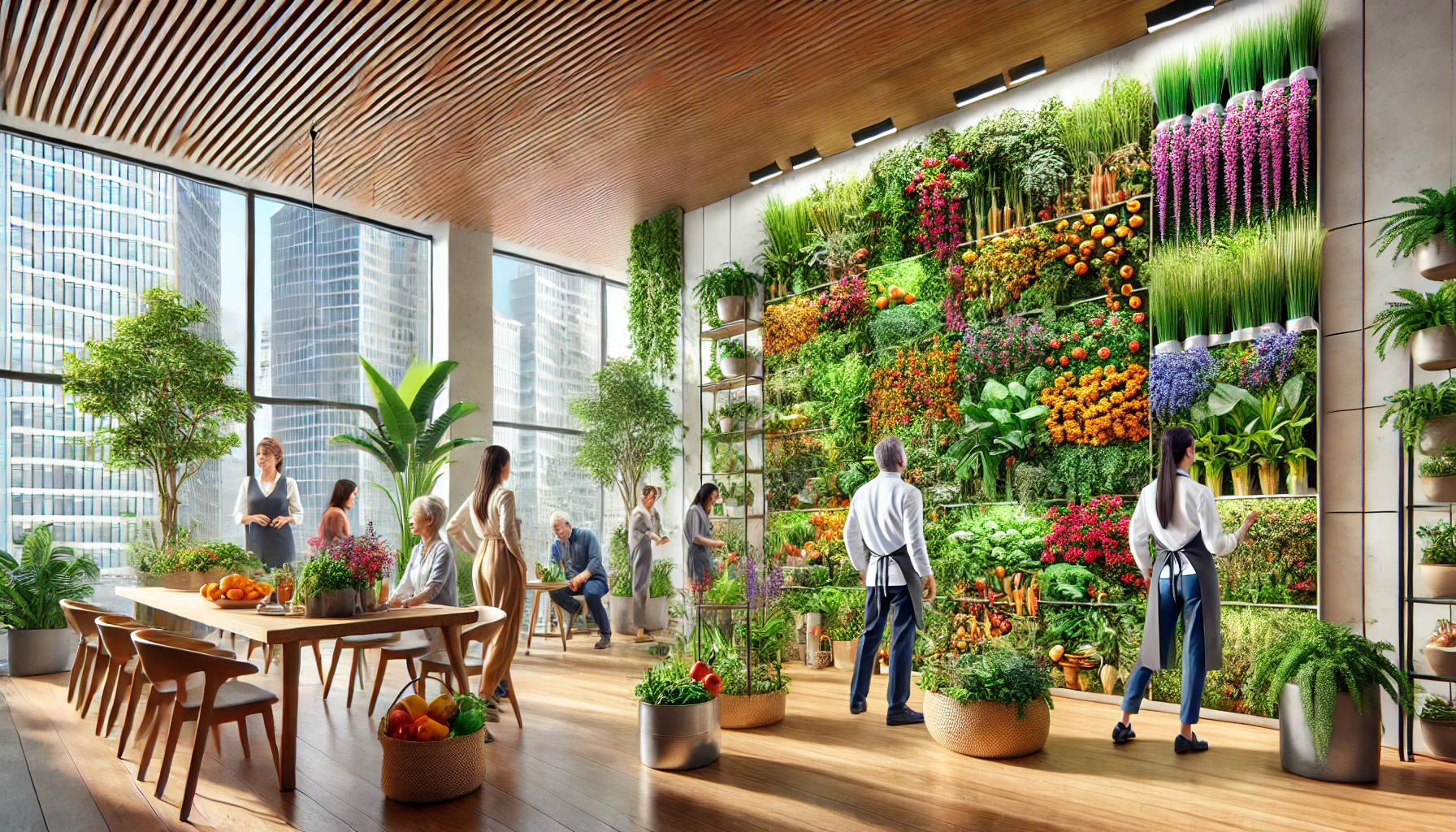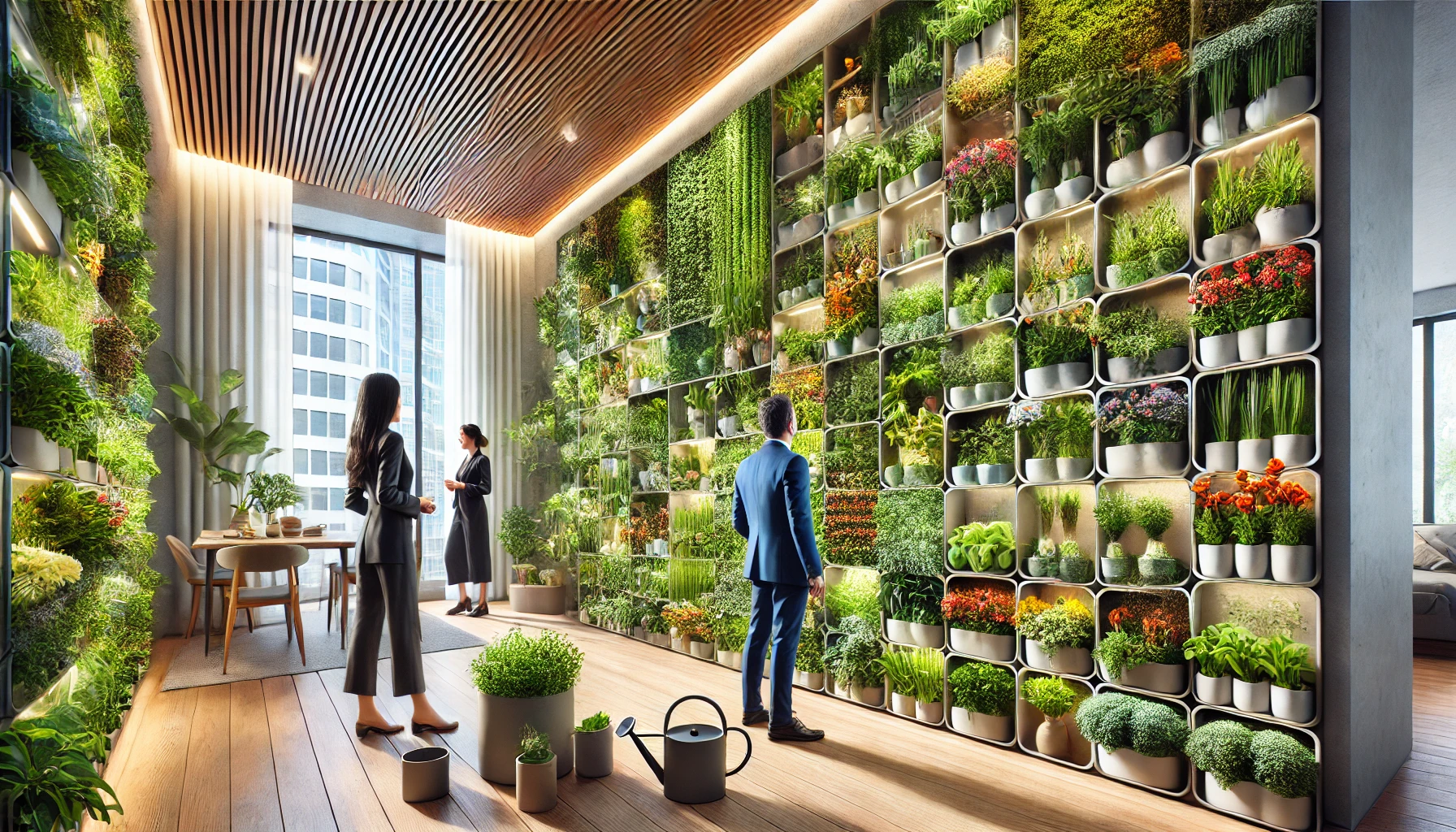Indoor vertical gardening systems are innovative, space-efficient solutions designed to grow plants upward rather than outward.
These systems use vertical structures such as walls, shelves, or towers, making them ideal for urban environments where horizontal space is limited.
By incorporating modern technology and sustainable practices, they enable individuals to cultivate a variety of plants indoors, from herbs and vegetables to ornamental plants, regardless of the season.
The Rise in Popularity and Trends in Indoor Vertical Gardening
The surge in urbanization and the global push towards sustainable living have propelled the popularity of indoor vertical gardening.
Increasingly, people are turning to these systems as a means to grow their own food, enhance their living spaces, and contribute to environmental sustainability.
With advancements in hydroponic and aeroponic technologies, as well as the integration of smart features like automated watering and LED lighting, indoor vertical gardening is becoming more accessible and attractive to a wide audience.
Social media platforms also play a significant role in popularizing this trend, showcasing aesthetically pleasing and functional setups that inspire people to embrace the concept.
Advantages of Indoor Vertical Gardening
Space Efficiency and Maximizing Growth Area
One of the most significant advantages of indoor vertical gardening is its space-saving nature. By utilizing vertical space, these systems allow urban dwellers to grow plants in apartments, small homes, or offices without compromising on floor space.
This efficient use of space maximizes the growing area and enables gardeners to cultivate more plants than traditional horizontal gardens.
Aesthetic Appeal and Improving Indoor Environments
Indoor vertical gardens enhance the aesthetic value of indoor spaces. They bring a touch of nature into homes and offices, creating a calming and visually appealing environment.
Beyond aesthetics, these gardens improve air quality by filtering pollutants and increasing oxygen levels, contributing to a healthier indoor atmosphere.
Ability to Grow Diverse Plant Species Year-Round
With controlled environments and advanced technologies, indoor vertical gardening systems support year-round cultivation. This means you can grow fresh herbs, leafy greens, and even fruits regardless of outdoor weather conditions.
Additionally, the systems’ adaptability allows for the cultivation of diverse plant species, from tropical plants to edible crops.
Challenges of Vertical Gardens
Discussing Logistics, Maintenance, and Initial Setup Costs
While indoor vertical gardening systems offer numerous benefits, they also come with challenges. Initial setup costs can be high, particularly for advanced systems with integrated lighting and automated irrigation.
Maintenance, including regular cleaning, monitoring of nutrient levels, and system checks, requires time and effort. Ensuring proper installation and setup is crucial to avoid potential issues such as leaks or structural instability.
Potential Challenges with Light, Water Distribution, and Pests
Providing adequate light for indoor plants can be a challenge, especially in spaces with limited natural light. While LED grow lights address this issue, they add to the overall cost.
Water distribution in vertical systems must be carefully managed to prevent overwatering or underwatering. Additionally, pests and diseases can spread quickly in confined spaces, requiring vigilant monitoring and prompt action.
Community Opinions: Are There Any Drawbacks to Using Vertical Gardens?
Community discussions often highlight the steep learning curve associated with indoor vertical gardening. Beginners may struggle with understanding plant needs, managing hydroponic systems, or balancing light and nutrients.
Despite these challenges, most enthusiasts agree that the benefits outweigh the drawbacks, especially with proper guidance and commitment.
Exploring Hydroponic Vertical Gardens
Defining Hydroponic Systems in the Context of Vertical Gardening
Hydroponic systems are soil-less growing methods that use nutrient-rich water to nourish plants. In vertical gardening, hydroponics is often employed to maximize efficiency and support plant growth in limited spaces.
These systems range from simple DIY setups to advanced, commercially available solutions.
The Benefits of Using Soil-Less Methods Indoors
Hydroponic systems offer several advantages, including faster plant growth and higher yields compared to soil-based methods. They eliminate soil-borne diseases and pests, reducing the need for chemical pesticides.
Additionally, hydroponics uses significantly less water, making it an eco-friendly choice for indoor gardening.
Evaluating the Cost-Effectiveness: Are Indoor Hydroponic Gardens Worth It?
The initial investment in a hydroponic vertical garden can be substantial, but the long-term benefits often justify the cost.
Savings on grocery bills, the ability to grow organic produce, and the satisfaction of homegrown plants are compelling reasons to consider these systems.
For those passionate about gardening, the convenience and efficiency of hydroponics make it a worthwhile investment.
Popular Indoor Vertical Gardening Systems
Analyzing Current Popular Products in the Market
The market for indoor vertical gardening systems is diverse, offering a range of products to suit different needs and budgets. Popular options include Gardyn, Tower Garden, and AeroGarden, each with unique features that cater to various user preferences.
The Unique Features and Benefits of Each System
- Gardyn: Known for its sleek design and smart technology, Gardyn offers automated watering and lighting, along with an app for monitoring plant growth.
- Tower Garden: A favorite among hydroponic enthusiasts, Tower Garden features a compact design and is ideal for growing a variety of plants.
- AeroGarden: Designed for beginners, AeroGarden provides an easy-to-use system with pre-seeded pods and customizable light settings.
Market Trends and Consumer Experiences
Consumer reviews highlight the increasing demand for systems that combine functionality with aesthetics. Features like app integration, energy efficiency, and customizable designs are driving market trends.
As the industry evolves, manufacturers are focusing on affordability and user-friendly interfaces to attract a broader audience.
Finding the Best Alternatives to Gardyn
What Sets Gardyn Apart from Other Systems?
Gardyn’s integration of AI technology and app-based monitoring makes it stand out in the market. Its focus on user convenience and high-quality design appeals to tech-savvy gardeners seeking a hassle-free experience.
Exploring Other Top-Rated Indoor Gardening Solutions
Other top-rated systems include:
- Click and Grow: An affordable option with smart soil technology.
- Rise Gardens: A modular system suitable for families and larger spaces.
- Bloombox Club: A subscription-based service offering curated plant selections.

Steps to Setting Up Your Indoor Vertical Garden
Guide to Choosing the Right Indoor Vertical Garden System
When selecting a system, consider factors like available space, budget, and the types of plants you wish to grow. Research product reviews and compare features to find the best fit for your needs.
Required Materials and Tools for Setup
Basic materials include the vertical gardening system, grow lights, water reservoirs, nutrients, and seeds or seedlings. Additional tools like pH testers and timers can help optimize plant care.
Basic Care Tips for Maintaining a Healthy Garden
- Watering: Ensure consistent water supply and avoid overwatering.
- Lighting: Position grow lights appropriately for optimal plant growth.
- Pruning: Regularly trim plants to promote healthy growth and prevent overcrowding.
Sustainability and Environmental Impact
Indoor Gardening as a Sustainable Practice
Indoor vertical gardening contributes to sustainability by reducing the need for large-scale agricultural practices and minimizing food transportation.
Reducing Urban Carbon Footprints with Vertical Gardens
These systems help offset carbon footprints by promoting local food production and improving indoor air quality. They also encourage the use of renewable resources and energy-efficient technologies.
Closing the Loop: Recycling and Waste Management in Gardening
Recycling water, using biodegradable planting materials, and composting plant waste are effective ways to make indoor vertical gardening more sustainable.
Future of Indoor Vertical Gardening
Technology Advancements and Innovations in Indoor Gardening
The future of indoor gardening is bright, with advancements in smart sensors, AI integration, and renewable energy-powered systems. Innovations like automated nutrient delivery and self-sustaining ecosystems are expected to redefine the industry.
Trends to Watch: Where Is the Industry Heading?
Key trends include the rise of urban farming initiatives, increased accessibility of affordable systems, and growing consumer interest in sustainable living.
Potential Impacts on Urban Life and Sustainability
Indoor vertical gardening has the potential to transform urban living by fostering self-sufficiency, enhancing green spaces, and promoting healthier lifestyles.
As the industry continues to grow, it will play a crucial role in addressing global challenges like food security and environmental sustainability.
Indoor vertical gardening systems offer a blend of innovation, sustainability, and practicality, making them a valuable addition to modern living.
Whether you’re a seasoned gardener or a beginner, these systems provide an opportunity to connect with nature, improve your indoor environment, and contribute to a greener future.


Wow, this is such an inspiring read! I’ve always loved the idea of vertical gardening, and your tips make it feel so doable. I’m especially excited about how these systems can save space and still create such a lush, green vibe indoors. Thanks for breaking it all down so clearly it’s time to give my walls a makeover!
“Thank you so much for your kind words! I’m thrilled to hear that you found the tips helpful and feel inspired to start your vertical gardening journey. It’s amazing how much greenery can transform a space, even in the smallest areas. I’d love to hear about your wall makeover once you get started—feel free to share your progress or ask any questions along the way. Happy gardening!”